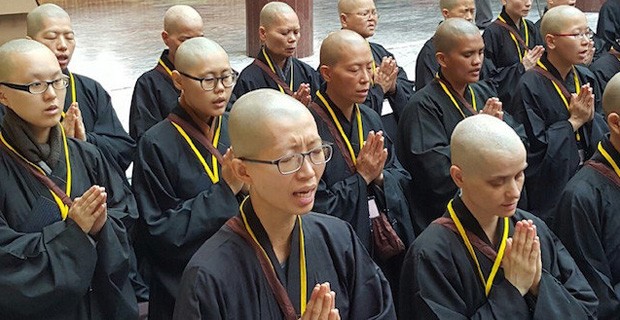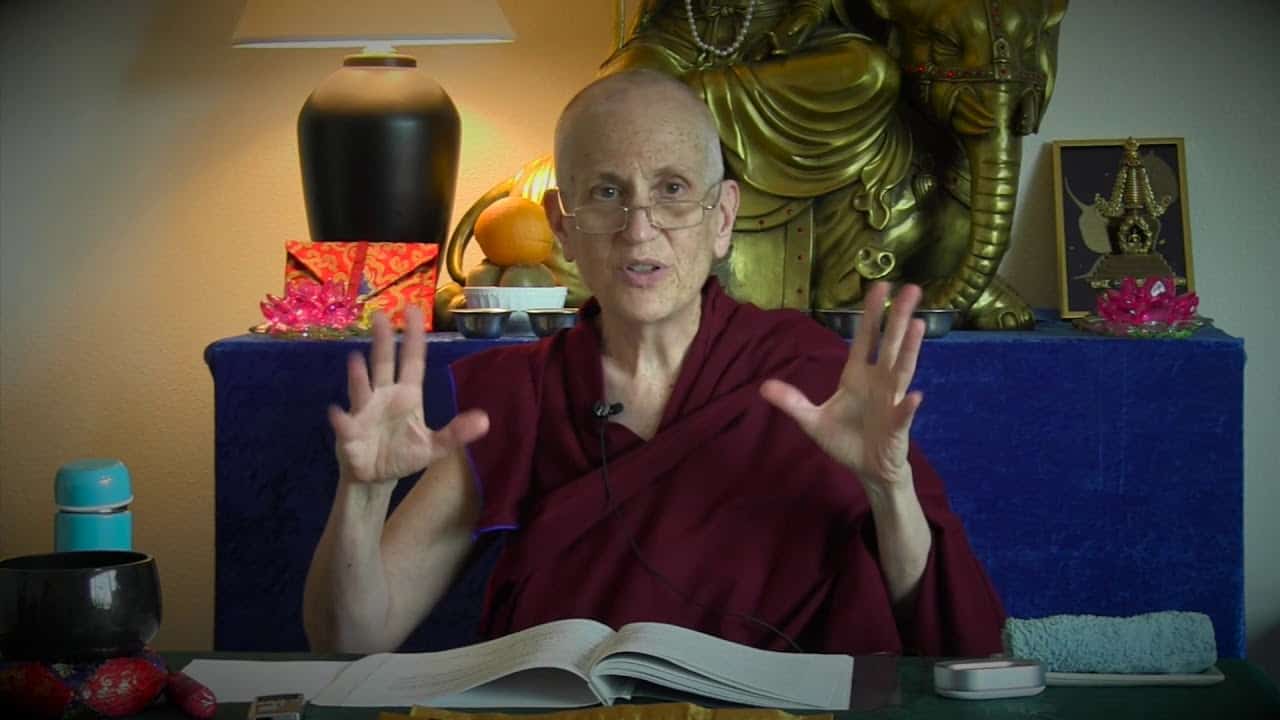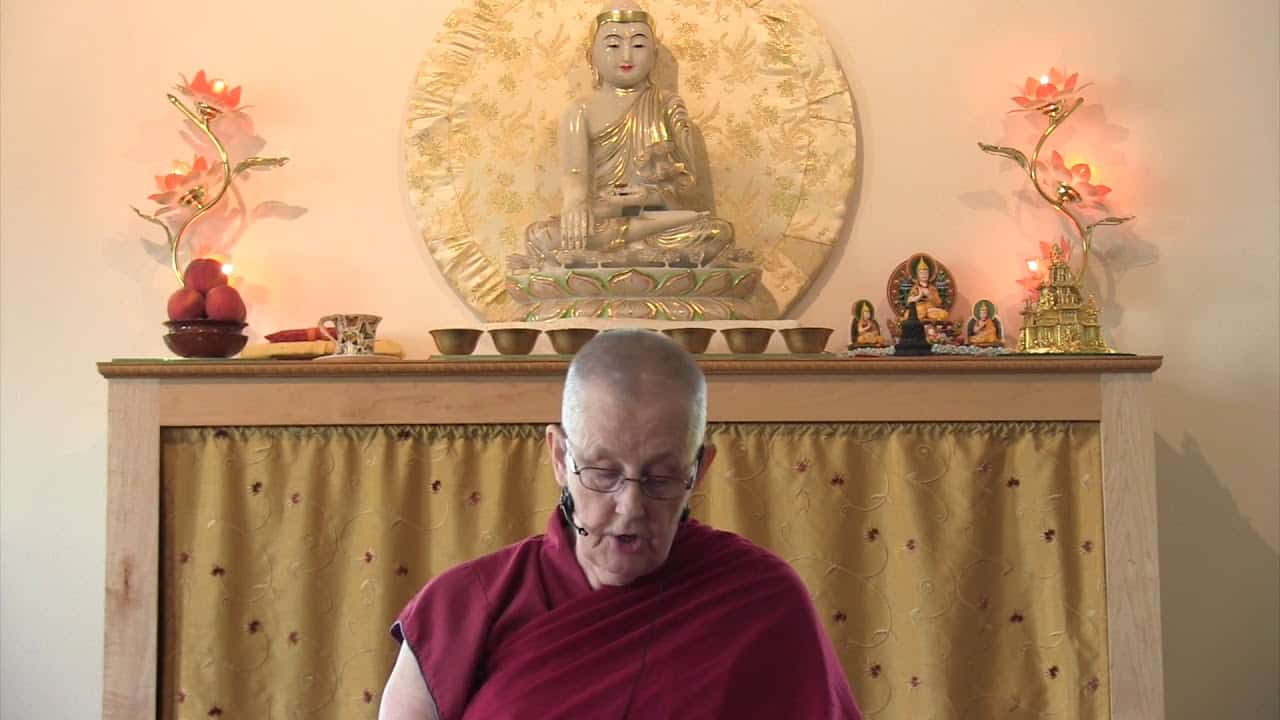Brief history of bhiksunis

Several years after the monks’ order was established in India in the sixth century BCE the Buddha set up the nuns’ order. Three levels of ordination exist for nuns: sramanerika (novice), siksamana (probationary), and bhiksuni (full ordination). These are taken gradually in order to prepare and accustom one to keep the full precepts and to assume responsibility for the wellbeing and continuation of the monastic community. One becomes a bhiksuni by taking the ordination from those who have received it; thus the existence of the bhiksuni ordination lineage is important, for in this way, the purity of the transmission is traced back to the Buddha himself. Women are to receive bhiksuni ordination from a community of at least ten bhiksunis, and, at a separate ceremony later the same day, from a community of at least ten bhiksus (fully ordained monks). In lands where such a large number of monastics does not exist, communities of five can give the ordination. (Note: This is according to the Dharmaguptaka Vinaya Tradition. According to the Mulasarvastivada Vinaya Tradition, twelve bhiksunis are needed to give the ordination in a “Central Land” and six in a “border area” where there are few monastics.)
The bhiksuni lineage flourished in ancient India and in the third century BCE spread to Sri Lanka. From there it went to China in the fourth century CE when the first bhiksuni ordination was given by a bhiksu sangha alone. The first dual ordination of bhiksunis in China occurred in 433. Due to warfare and political problems, the lineage died out in both India and Sri Lanka in the eleventh century CE, although it continued to spread throughout China and to Korea and Vietnam.
Regarding bhiksunis in Tibet, there are various views. His Holiness the Dalai Lama says that the great Indian abbot Santaraksita brought bhiksus to Tibet to give the bhiksu ordination in the late eighth century, but he did not bring bhiksunis and thus the bhiksuni ordination was not given in Tibet. However, some Kargyu and Nyingma lamas say the bhiksuni ordination was lost in Tibet during the persecution of Buddhism by King Langdarma in the ninth century. In any case, the bhiksuni lineage was not established in Tibet after that due to the difficulties of crossing the Himalayan Mountains. A sufficient number of Indian bhiksunis did not go to Tibet, nor did a sufficient number of Tibetan women go to India to take the ordination and return to Tibet to pass it on to others. However, there historical records of a few bhiksunis in Tibet receiving their ordination from the bhiksu sangha alone, although that never took hold in Tibet.
While several Buddhist countries have lacked a sangha of fully ordained nuns, they have novice nuns who have ten precepts or “nuns” with eight precepts. Monks in the Tibetan community give the sramanerika ordination. The bhiksuni ordination was never extant in Thailand. In Thailand, Myanmar, and Cambodia women generally receive eight precepts and are known as “maechi” or as “thilashin” in Myanmar. In Sri Lanka they generally receive ten precepts and are called “dasasilmatas.” Although the maechis, thilashin, and dasasilmatas live in celibacy and wear robes demarcating them as religious women, their precepts are not regarded as any of the three Pratimoksa ordinations for women. However, this has begun to change.
As Buddhism spread in ancient India, various Vinaya schools developed. Of the eighteen initial schools, three are extant today: the Theravada, which is widespread in Sri Lanka and Southeast Asia; the Dharmaguptaka, which is practiced in Taiwan, China, Korea, and Vietnam; and the Mulasarvastivada, which is followed in Tibet and Mongolia. All of these Vinaya schools have spread to Western countries in recent years.
Considering that the Vinaya was passed down orally for many centuries before being written down and that the various schools had little communication with each other due to geographical distance, it is amazing that the Pratimoksa precepts and the Vinaya are so consistent among them. Slightly different variations of the listing of the monastic precepts exist, but no major, glaring differences appear. Of course, over the centuries, the schools in each country have developed their own ways of interpreting and living in the precepts in accord with the culture, climate, and social situation in each place.
In recent developments, monastics of the Dharmaguptaka Vinaya school together with Theravadin monks have helped to re-introduce the full ordination in the Theravada tradition, and bhikkhunis have established communities in Thailand, Sri Lanka, and in the West. While the Asian nuns often face challenges, they are also finding growing acceptance and support. In the Tibetan tradition, the 17th Gyalwang Karmapa has begun to prepare Tibetan nuns for bhikshuni ordination in conjunction with Taiwanese nuns of the Dharmaguptaka lineage, and some Western nuns in the Tibetan tradition have received bhiksuni ordination in the Dharmaguptaka Vinaya lineage.
Read a full explanation of the issues and find additional resources on the Commiteee for Bhiksuni Ordination website.
Venerable Thubten Chodron
Venerable Chodron emphasizes the practical application of Buddha’s teachings in our daily lives and is especially skilled at explaining them in ways easily understood and practiced by Westerners. She is well known for her warm, humorous, and lucid teachings. She was ordained as a Buddhist nun in 1977 by Kyabje Ling Rinpoche in Dharamsala, India, and in 1986 she received bhikshuni (full) ordination in Taiwan. Read her full bio.


